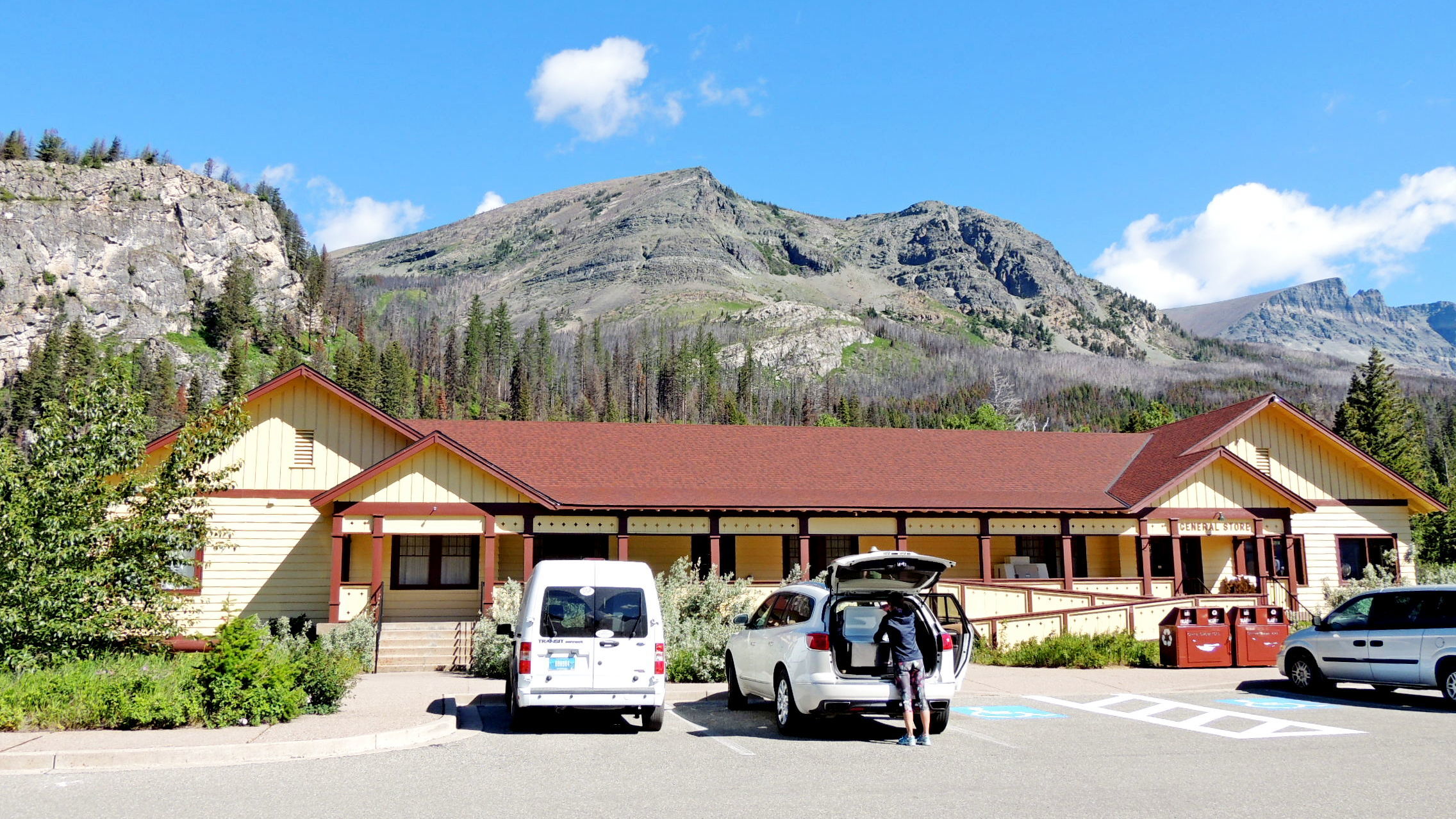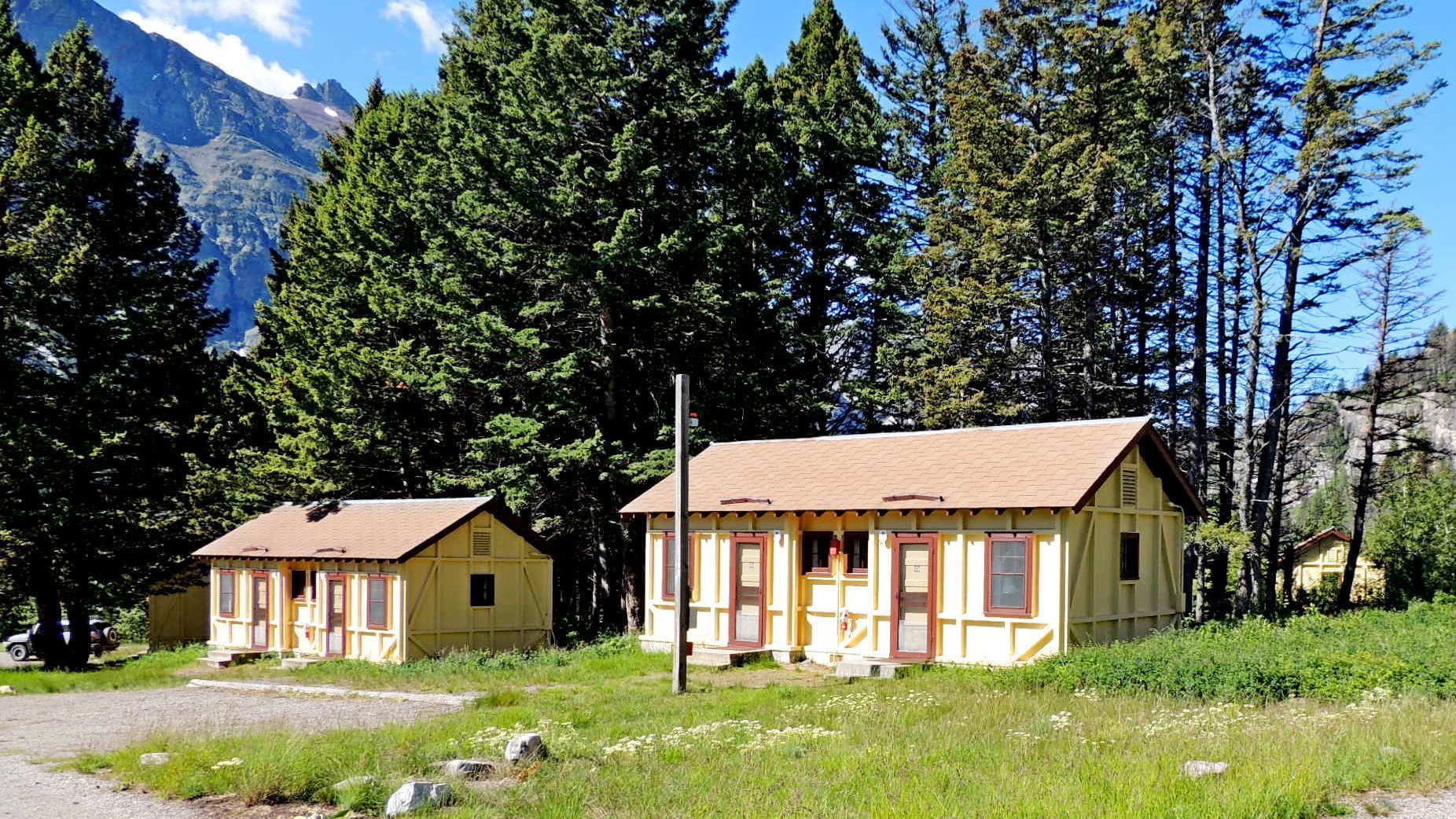|
 Rising Sun Auto Camp - Glacier National Park, MT, USA Posted by:  T0SHEA T0SHEA
N 48° 41.708 W 113° 31.137
12U E 314643 N 5396627
Entered in the National Register on January 19, 1996, Rising Sun Auto Camp was constructed in 1941 to serve the motoring public.
Waymark Code: WM115M7
Location: Montana, United States
Date Posted: 08/19/2019
Views: 1
When Glacier National Park was created in the early 20th century, the only means of access was via the Great Northern Railway. As automobiles improved and roadways were constructed to accommodate them, tourists began to take to the road instead of the railroad. Soon Auto Camps, both government operated and privately owned, began to appear across the continent. The first to be built in Glacier National Park, the Swiftcurrent Auto Camp in 1933, proved very successful as motoring tourists demanded less expensive accommodations which were easily accessible by road.
Built at about the midpoint of St. Mary Lake, Rising Sun Auto Camp is about 6 miles west of the east edge of Glacier National Park along Going to the Sun Road. The original camp consisted of a large general store/motel, two dormitories, a power house, and 19 cabins. The cabins are spread, seemingly randomly, through the Douglas Fir at the rear of the camp. Some are well shaded for privacy and protection from the sun while most are more open, allowing cooling breezes. Each cabin is dual occupancy, with separate entrances and a single bedroom in each side.
Some more recent buildings have been added to the side, most notably a motel at the front with larger, dormitory style, accommodations. These have been built along the road opposite the 1941 cabins.
Rising Sun Auto Camp
As the auto tourist, independently mobile and possessing limited funds, replaced the captive and wealthy clientele that had dominated the first twenty years of Glacier history (1910-1930), the nature of the accommodation/ transportation/recreation infrastructure evolved. This evolution was prompted both by an increasingly powerful National Park Service and by the inevitable conclusion of the principal concessioner (the Glacier Park Hotel Company) that their rail network was no longer profitable. Post-1930 development clearly represented the "new" traveling public, more interested in economy and less interested in expensive European-style comfort or western nostalgia ~ trademarks of the park's grand hotels.
Beginning in the 1920s, NPS Director Stephen Mather called for development of spartan, inexpensive facilities where tipping, dress codes and lavish furnishings were not required (Mather 1923:63). By the 1930s, tourists to Glacier National Park angrily reiterated these demands:
There should be erected at once at every camp, good substantial permanent buildings of one, two, three, and four rooms for just the "forgotten man" ... There should also be constructed at every camp a building for a restaurant or cafeteria where meals may be obtained at a reasonable price.
(Whipps, 1932)
By 1940, under increasing pressure from the NPS and encouraged by the success of the Swiftcurrent Auto Camp, the Glacier Park Hotel Co. began construction of the Roes Creek Auto Camp, later renamed the East Glacier Auto Camp and finally (1950) the Rising Sun Auto Camp. This facility, designed by the Hotel Company and approved by NPS landscape architects, consisted of a camp store and coffee shop (with gas pumps); dormitory/registration area; power house; and 19 small cabins. Each cabin, "instead of being grouped with others in a plaza ... occupied] a selected site among the gnarled, windswept Douglas firs" (USDI NPS c.1941).
This isolated placement, generally dictated by topographic lines and natural vegetation and in stark contrast to conspicuous and vista-determined placement of the early hotels, was also the result of NPS demands on concessioners. In 1930, the NPS published a primer on architectural and landscape philosophy:
Although a park structure exists solely for the use of the public, it i$ not required that it be seen from some distance. In its most satisfying expression, the park structure is designed with a view to subordination to its environment and it is located so that it may profit from any natural screening that may exist.... Since the concession [building] must be located at the 'crossroads' of the park and must proclaim itself to the public, it cannot be exactly the shy violet among park buildings. It must announce its commercial traffic unmistakably but with subtlety (Cammerer 1935:4,5,95).
From the NRHP Continuation Sheet
 |
 |
Daily, weekly, or monthly rates:
Cabins - $173 per night
General Store Rooms - $177 per night

Kitchens or kitchenettes in the rooms?: no

Refrigerator?: no

Fireplaces in the rooms?:
no

Handicap accessible rooms?: Select rooms only

Restaurant on premises and type of restaurant?:
Yes

Childcare provisions?:
No

Swimming pool?: No - lake nearby

Meeting or convention room(s) available?: No

Office hours and any seasonal operating times or closed periods?:
2019 Dates – Opens: June 14, 2019 | Closes: September 9, 2019
2020 Dates – Opens: June 12, 2020 | Closes: September 9, 2020

Describe ease of accessibility to the location using a vehicle, hiking, etc.:
6 miles west from east park entrance on Going to the Sun Road, visible on north (right) side of road.

Office phone number: Toll-free within the U.S.: 855-SEEGLACIER (855-733-4522) - Outside the U.S.: +1-303-265-7010

Discounts available?: Not listed

Office address: Not listed

Website of facility: Not listed

Types of recreation, activities, and attractions nearby: Not listed

|
Visit Instructions:Please submit a photo(s) taken by you of your visit to the location (non-copyrighted photos only). GPS photos are also accepted with the location in the background, and old vacation photos are accepted. Additional pictures are appreciated of the area and facility to help others identify if this is the kind of place they want to stay. If you are not able to provide a photo, then please describe your visit or give a story about the visit
Notify the waymark owner of any changes in the status of the facility to ensure the waymark description is kept current. This may include changes in rates, area attractions, renovations, additions to facilities, increased lodging restrictions, etc.
If you visit and find the facility is closed permanently, notify both the group officers and waymark owner of the change. We will then update the waymark description and name to include the words "Closed permanently", and may consider the waymark to be archived.
Recent Visits/Logs:
| There are no logs for this waymark yet. |
|
|
|
|